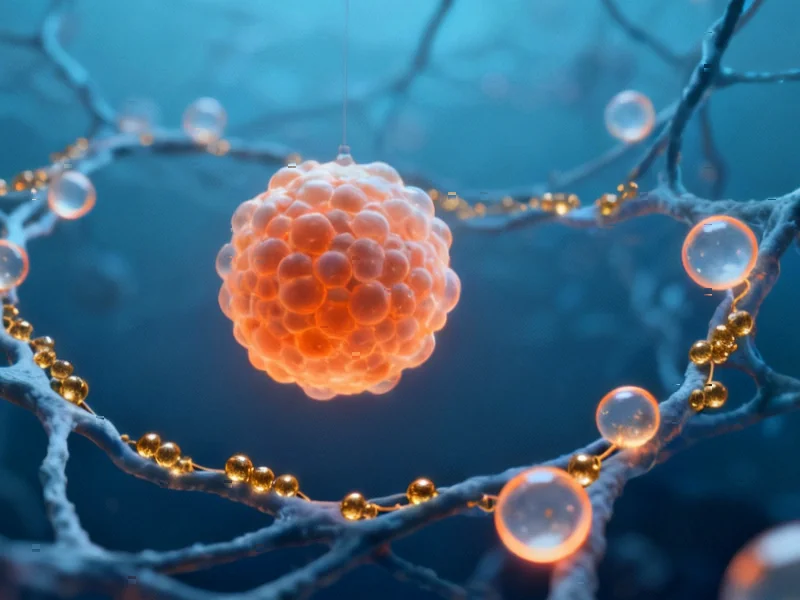A Backward Approach to Forward Progress
In a surprising twist, an international research collaboration has made significant headway in understanding superconducting nickelates by systematically damaging some of the best available samples. According to recently published research, scientists from MPI-CPfS teamed up with Stanford University and Ecole Polytechnique to bombard superconducting nickelate thin films with extremely high-energy electrons, deliberately introducing atomic-scale defects.
Table of Contents
This counterintuitive approach—starting with pristine materials and carefully degrading them—has yielded crucial insights that help narrow down competing theories about how superconductivity emerges in these complex materials. The findings, published in Physical Review Letters, represent a clever workaround to one of the field’s most persistent challenges: the extreme difficulty of synthesizing high-quality nickelate superconductors in the first place.
The Nickelate Puzzle
Nickelates have occupied a curious position in condensed matter physics for decades. Researchers at IBM Zürich actually began searching for superconductivity in nickel-oxygen compounds before their famous 1986 discovery of superconductivity in copper-oxide ceramics, or cuprates. Yet nickelates remained stubbornly non-superconducting until 2019, when a Stanford team finally demonstrated the phenomenon.
“The delay in discovering nickelate superconductivity speaks volumes about how challenging these materials are to work with,” observed one condensed matter physicist familiar with the field. “Unlike conventional superconductors that follow established theoretical frameworks, nickelates belong to the more mysterious ‘unconventional’ class that continues to defy complete understanding.”
What makes nickelates particularly intriguing—and frustrating—is their dual nature. They show striking similarities to their cuprate cousins but also exhibit crucial differences that complicate direct comparisons. Both families achieve superconductivity at relatively high temperatures compared to conventional superconductors, making them potentially more useful for practical applications. Yet the fundamental mechanism behind their superconducting behavior remains hotly debated.
Controlled Damage as an Investigative Tool
The research team’s innovative approach leveraged a fundamental principle: different types of superconductors respond differently to atomic-level disorder. By exposing high-quality thin film samples to megavolt-energy electrons, the researchers could gradually increase defect density while monitoring how the superconducting transition temperature changed.
“It’s like testing a bridge by carefully removing individual bolts and seeing how much weight it can still bear,” explained a materials scientist not involved in the study. “The pattern of degradation tells you which structural elements are most critical to the material’s performance.”
As the irradiation progressed and atomic defects accumulated, the temperature at which the nickelate samples superconducted gradually decreased. The specific relationship between defect density and superconducting performance provided crucial experimental data that helps eliminate some theoretical models while supporting others.
Narrowing the Possibilities
What makes this approach particularly powerful is its systematic nature. Unlike naturally occurring defects that vary unpredictably between samples, the electron irradiation creates a controlled, quantifiable level of disorder. This allows researchers to establish clear correlations between defect density and material properties.
Analysis of the resulting data suggests that nickelate superconductivity shares important characteristics with cuprates but may also involve distinct mechanisms. The sensitivity to specific types of atomic disorder provides fingerprints that help identify which theoretical frameworks remain viable.
Building on these findings, the research establishes key benchmarks for future materials development. As synthesis techniques for nickel oxide superconductors continue to improve, researchers now have clearer targets for what constitutes “high quality” from a fundamental physics perspective.
Broader Implications
This research comes at a pivotal moment for nickelate superconductors. The field has rapidly expanded since the 2019 breakthrough, with new compounds achieving progressively higher transition temperatures. Understanding why these materials superconduct—and how their behavior compares to cuprates—could unlock broader principles governing high-temperature superconductivity.
Meanwhile, the irradiation methodology itself represents a valuable addition to the condensed matter physicist’s toolkit. The ability to systematically introduce controlled defects could prove useful for studying other complex quantum materials where synthesis challenges limit experimental options.
As one researcher familiar with the work noted, “Sometimes the best way to understand how something works is to carefully break it and watch what happens. This study demonstrates that principle beautifully, turning a materials challenge into a scientific opportunity.”



